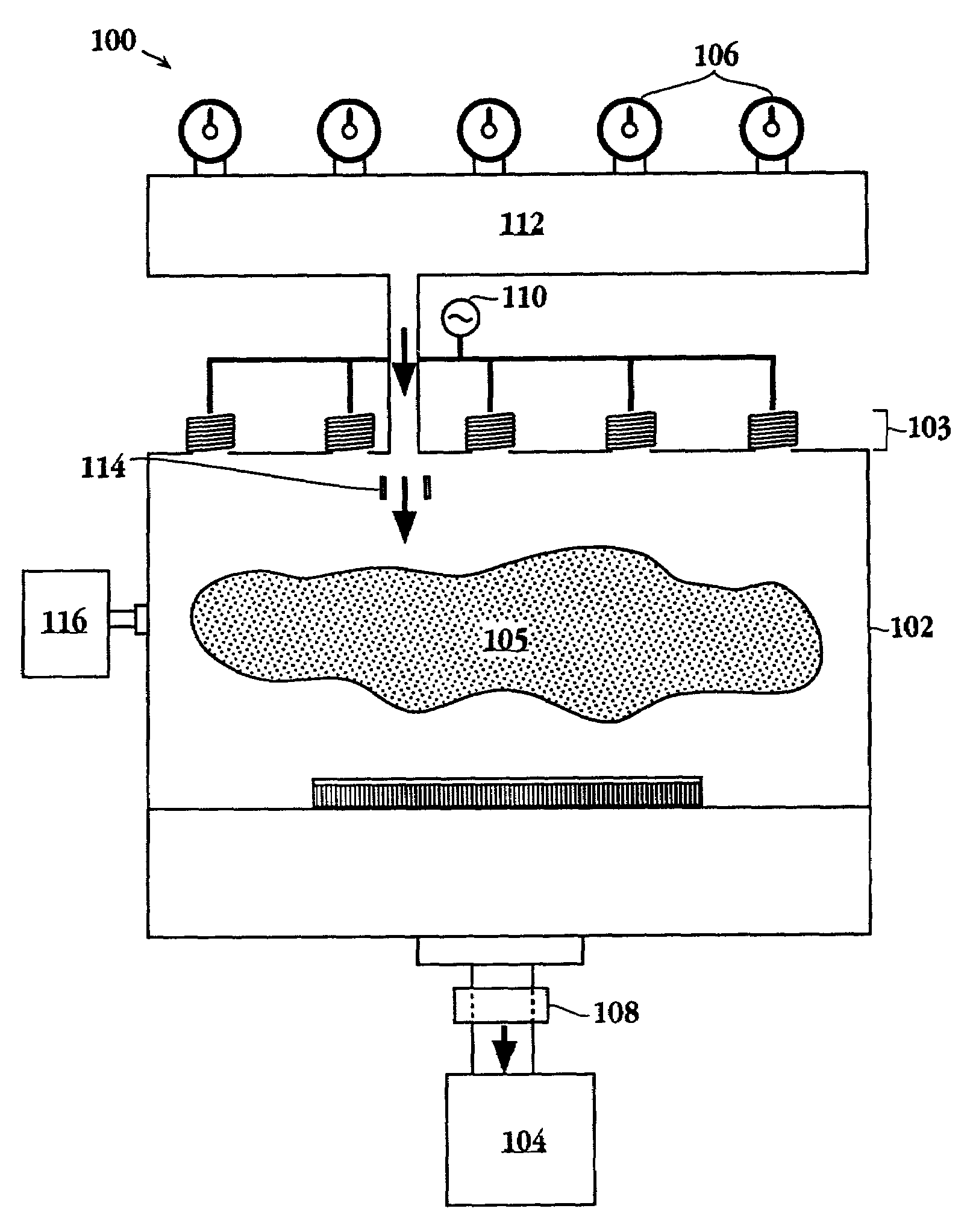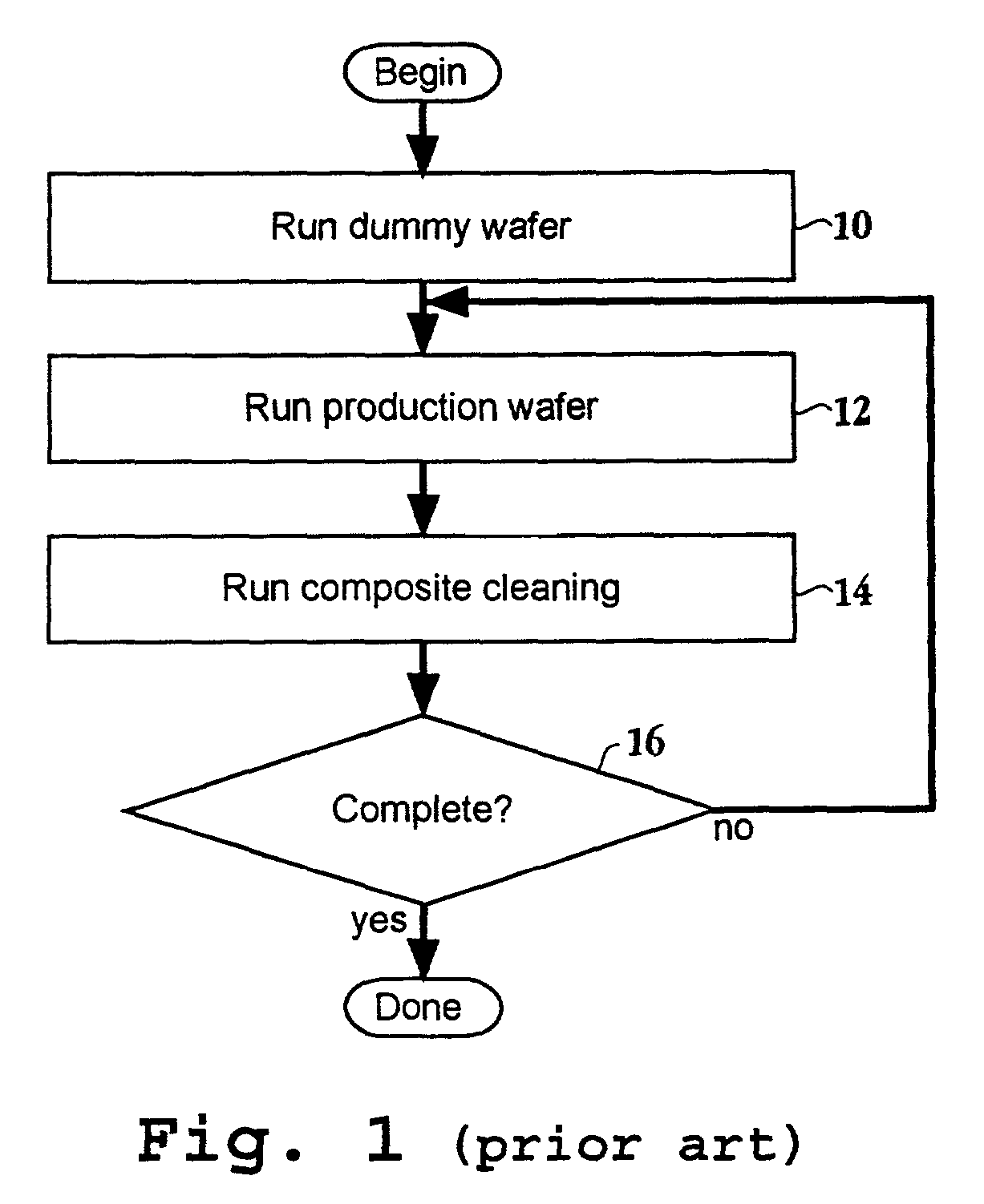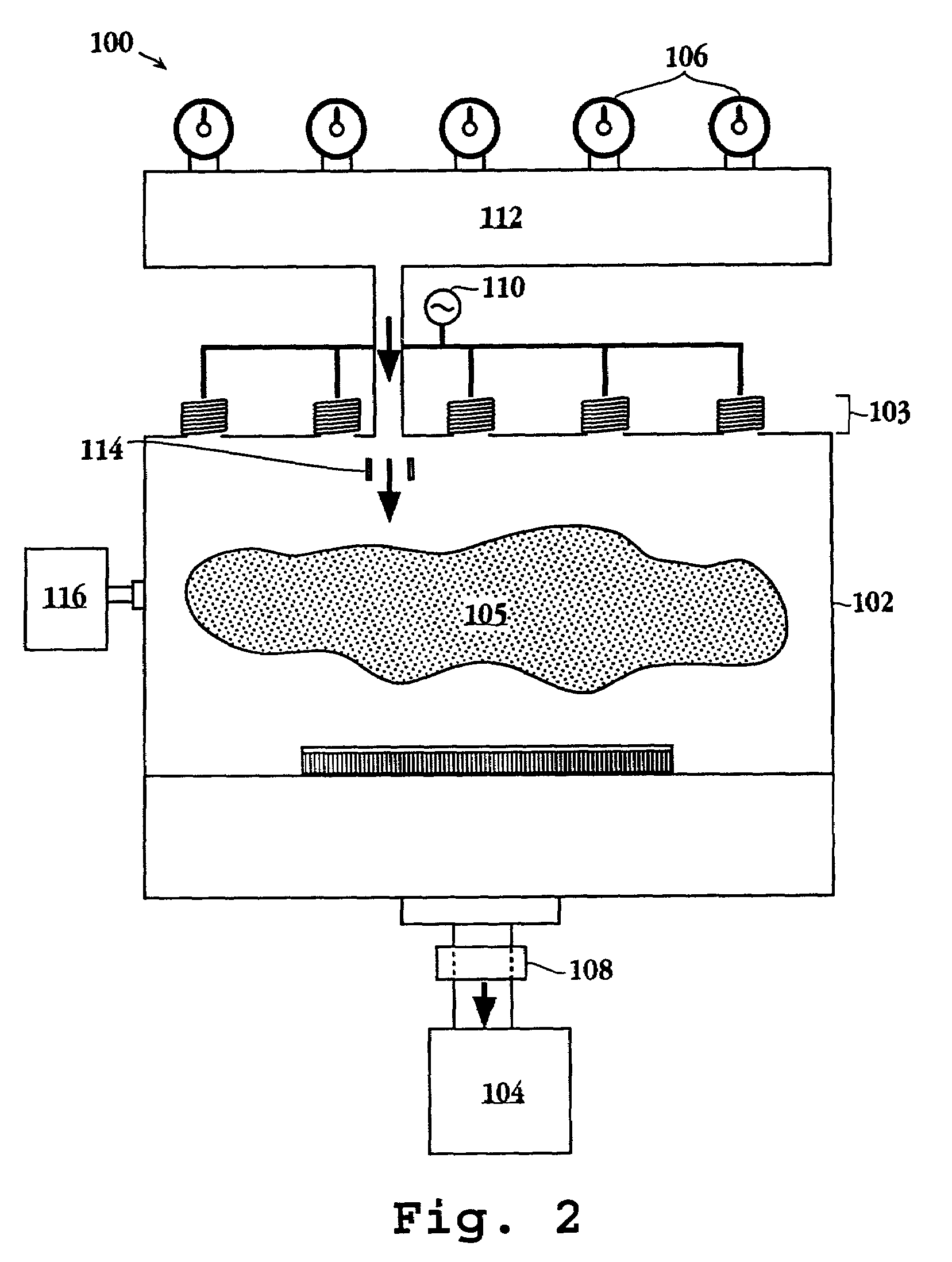Plasma cleaning of deposition chamber residues using duo-step wafer-less auto clean method
a technology of auto clean and deposition chamber, which is applied in the direction of cleaning hollow objects, cleaning using liquids, coatings, etc., can solve the problems of undesired residues, defective substrates, and undesired residues deposited on the inner surfaces of the process,
- Summary
- Abstract
- Description
- Claims
- Application Information
AI Technical Summary
Benefits of technology
Problems solved by technology
Method used
Image
Examples
Embodiment Construction
[0029]An invention is described for providing an optimized dual step wafer-less auto clean method optimized for removing multiple byproducts deposited onto walls of a semiconductor processing chamber. It will be obvious, however, to one skilled in the art, that the present invention may be practiced without some or all of these specific details. In other instances, well known process operations have not been described in detail in order not to obscure the present invention. FIG. 1 is described in the “Background of the Invention” section.
[0030]The basic concept of plasma etching is rather direct. A glow discharge is utilized to produce chemically reactive species (neutral atoms, radicals and ions) from a relatively inert molecular gas. The etching gas is selected so as to generate species that react chemically with the material to be etched, and whose reaction product with the etched material is volatile so that it can be removed from the processing chamber.
[0031]An ideal dry etch p...
PUM
| Property | Measurement | Unit |
|---|---|---|
| power | aaaaa | aaaaa |
| pressure | aaaaa | aaaaa |
| pressure | aaaaa | aaaaa |
Abstract
Description
Claims
Application Information
 Login to View More
Login to View More - R&D
- Intellectual Property
- Life Sciences
- Materials
- Tech Scout
- Unparalleled Data Quality
- Higher Quality Content
- 60% Fewer Hallucinations
Browse by: Latest US Patents, China's latest patents, Technical Efficacy Thesaurus, Application Domain, Technology Topic, Popular Technical Reports.
© 2025 PatSnap. All rights reserved.Legal|Privacy policy|Modern Slavery Act Transparency Statement|Sitemap|About US| Contact US: help@patsnap.com



